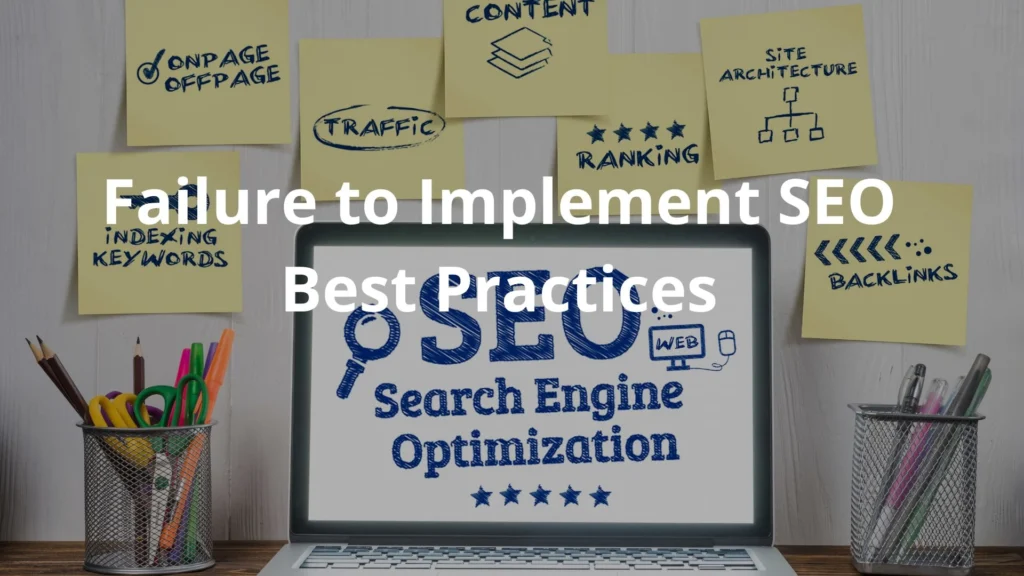
The digital landscape in 2025 presents new challenges that businesses must address to stay competitive. While having a website was once considered a luxury, today, it is a necessity for any business. However, simply having a website is no longer enough. The risk of failure is very real for websites that fail to adapt to evolving technology and changing user expectations. In this article, we’ll delve into the 11 reasons your website might fail in 2025 and offer actionable advice to help you avoid these pitfalls.
1. Poor User Experience (UX) Design
User experience (UX) is one of the most important elements that will determine the success of your website in 2025. Websites that provide a poor user experience—slow load times, confusing navigation, or poor mobile optimization—are more likely to fail.

Slow Loading Times
In a fast-paced digital environment, slow loading times are a dealbreaker. Studies have shown that 53% of users abandon a site if it takes more than 3 seconds to load. As technology advances and user expectations rise, the tolerance for delays continues to shrink. If your website is slow, you risk losing both visitors and customers.
Complicated Navigation
Visitors should never feel lost or confused on your website. Websites with poorly designed navigation systems make it difficult for users to find the information they need, leading to frustration and high bounce rates. Simplify your website’s structure and create clear categories and menus to enhance usability.
Lack of Mobile Optimization
Mobile traffic is expected to continue growing, and websites that aren’t optimized for mobile users risk alienating a large portion of their audience. A responsive website that adjusts to different screen sizes is no longer optional—it’s essential for success in 2025.
2. Ignoring Mobile-First Approach
With mobile devices becoming the primary tool for browsing the internet, a mobile-first approach is critical. Google now indexes websites based on their mobile versions first, so if your website isn’t optimized for mobile devices, it will struggle in terms of SEO rankings.

Website Not Optimized for Mobile
Websites that are not fully optimized for mobile viewing will frustrate users. It’s not just about making sure the website looks good on mobile; it needs to be functional too. Buttons should be easy to click, text should be legible, and images should load quickly.
Slow Performance on Mobile
Slow mobile site performance is a major concern for user retention. Slow-loading pages will discourage users from exploring your site further, increasing the likelihood of abandonment. Ensure your mobile website is optimized for speed with compressed images and minified scripts.
3. Failure to Implement SEO Best Practices
SEO is a crucial factor in ensuring that your website ranks well on search engines like Google. In 2025, SEO will continue to evolve, and failing to stay on top of best practices can cause your website to fall behind.

Outdated SEO Techniques
Techniques such as keyword stuffing and excessive backlinking are no longer effective and can even harm your rankings. Search engines now prioritize high-quality, relevant content. If your website isn’t adopting modern SEO strategies, it will be left behind.
Ignoring Technical SEO
Technical SEO is the foundation of a website’s visibility in search engines. Elements such as site speed, mobile responsiveness, and structured data are key to a well-performing site. Failing to focus on technical SEO can result in poor search engine rankings, making it harder for potential customers to find you.
No Keyword Research
Keyword research is essential to understanding what your target audience is searching for. Without proper keyword research, your content might not align with what users are looking for, resulting in poor search engine rankings and low traffic.
4. Lack of Personalization
In 2025, website visitors expect a personalized experience. A generic website without any form of customization or tailored content will fail to meet the expectations of modern users.
Generic Content
Generic, one-size-fits-all content is not enough to engage today’s audience. Instead, use data and insights to personalize the user experience based on individual browsing habits, location, or past interactions with your website. Personalizing content can increase engagement and boost conversion rates.
No Personalized Recommendations
Websites that fail to offer personalized recommendations—whether for products, services, or content—miss out on opportunities to increase sales or engagement. E-commerce sites that use personalized recommendations based on user preferences or browsing history see higher conversion rates.
Ignoring User Data
By collecting data on your visitors’ behaviors and preferences, you can optimize their experience on your site. Not leveraging this data could mean you’re missing out on opportunities to provide tailored content that would resonate with your audience.
5. Not Integrating with Social Media
Social media integration has become an essential part of website design. In 2025, websites that fail to integrate social sharing buttons or user-generated content will miss valuable opportunities to engage with users and drive traffic.

Missing Social Sharing Options
If users can’t easily share your content on their own social media accounts, you’re missing an opportunity to extend your reach. Make sure your content is easily shareable by adding social sharing buttons to key areas of your website.
Ignoring User-Generated Content
User-generated content (UGC) like reviews, comments, and testimonials helps build trust and authenticity. Featuring UGC on your website increases credibility and encourages others to interact with your site. In 2025, websites that neglect to showcase UGC will miss out on building stronger relationships with their audience.
6. Security Issues and Lack of SSL
As cyber threats evolve, website security will continue to be a critical concern in 2025. Websites without proper security measures risk facing data breaches, loss of trust, and legal consequences.

No SSL Certificate
An SSL certificate is essential for protecting user data, especially when it comes to e-commerce websites. Websites without SSL certificates will be flagged as “Not Secure” by browsers, which can scare off potential visitors. Ensure your site has SSL enabled to keep your visitors’ information safe and secure.
Lack of Regular Security Updates
Cybersecurity threats change frequently, and keeping your website up-to-date with the latest security patches is essential to protecting your site from hackers and data breaches. Failing to do so could result in a security breach that damages your brand’s reputation and customer trust.
7. Inconsistent Website Compatibility Across Devices
Website compatibility across different devices and browsers remains an essential factor in ensuring that all users have a positive experience.

Poor Responsiveness
Websites that don’t adjust to various screen sizes will result in a frustrating user experience. Whether it’s on a smartphone, tablet, or desktop, your website should provide a seamless experience on any device.
Browser Compatibility Issues
Inconsistent performance across different browsers (Chrome, Firefox, Safari) can lead to frustration for users. Regular testing across multiple platforms ensures that your website functions as intended on all browsers.
8. Unclear Call-to-Action (CTA)
A website without a clear call-to-action (CTA) is like a store without a checkout counter. Visitors should always know what their next step is.
Weak CTAs
Your CTAs should be clear and compelling. If they are too vague or hard to find, users might leave your site without taking any action. Whether it’s “Buy Now,” “Sign Up,” or “Learn More,” your CTA should stand out and guide the user to the next step.
Overcomplicated CTAs
Having too many different CTAs on a page can overwhelm users and make it hard for them to know what action to take. Keep it simple, and focus on one key action per page.
9. Outdated Content and Design
An outdated website with old content and designs will immediately give users the impression that your business is behind the times.
Old Design Trends
Web design trends evolve quickly, and a website that looks outdated will discourage users from trusting your brand. Updating your website’s design to reflect current trends is essential for maintaining user engagement.
Unclear or Irrelevant Content
If your website content isn’t regularly updated, it will appear stale and irrelevant. Ensure that your content is current, valuable, and addresses the needs of your target audience.
10. Not Tracking Website Performance
In 2025, analytics and data are crucial to understanding how your website is performing and identifying areas for improvement.

No Analytics Setup
Websites without analytics tracking can’t measure how well they are performing. Set up tools like Google Analytics to track visitor behavior, bounce rates, and conversions. These insights will help you make data-driven decisions to improve your website.
Ignoring Key Metrics
Metrics like bounce rate, page load speed, and conversion rate should be regularly monitored to gauge your website’s success. By failing to track these key indicators, you risk making decisions that aren’t based on actual data, which can hinder website performance.
11. Using Outdated Technology
Technology evolves rapidly, and websites built on outdated platforms or technologies will struggle to meet the demands of modern users.

Old Content Management Systems (CMS)
Many old CMS platforms no longer support modern web design practices or features. If your website is built on outdated technology, it may be hard to make updates or implement new features.
Lack of Integration with Modern Tools
Websites that fail to integrate with modern tools, such as CRM systems, marketing automation, and email marketing, will be at a disadvantage in 2025. Ensure your website is built on a scalable platform that can integrate with the latest technologies.
Conclusion
As we move further into 2025, the digital landscape will continue to evolve at a rapid pace. Websites that fail to keep up with advancements in technology, user experience, and SEO will struggle to survive. However, by addressing the 11 key reasons outlined in this article, you can ensure that your website not only survives but thrives in the competitive online space.
To succeed, prioritize user experience, optimize for mobile, implement best SEO practices, and ensure your website is secure and up-to-date. Stay ahead of the curve by continually assessing and improving your website’s performance, so it can stand out in the crowded digital marketplace.
By keeping these best practices in mind, your website will be well-equipped to succeed in 2025 and beyond.